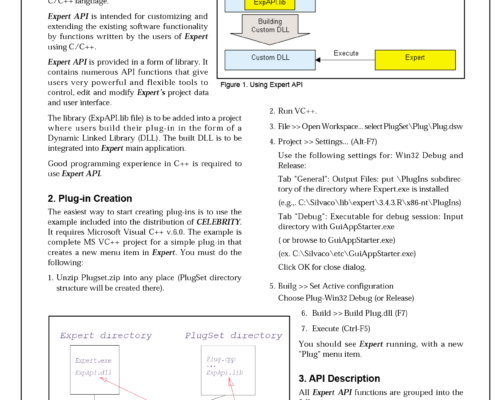
Expert’s Application Programming Interface (Expert API)
Expert API is intended for customizing and extending the existing software functionality by functions written by the users of Expert using C/C++.
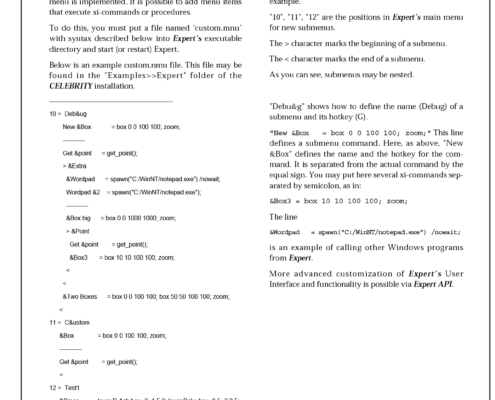
Add Custom Commands to Expert’s Menu
A simple way to add custom commands to Expert's menu is implemented. It is possible to add menu items that execute xi-commands or procedures. To do this, you must put a file named 'custom.mnu' with syntax described below into Expert's executable directory and start (or restart) Expert.
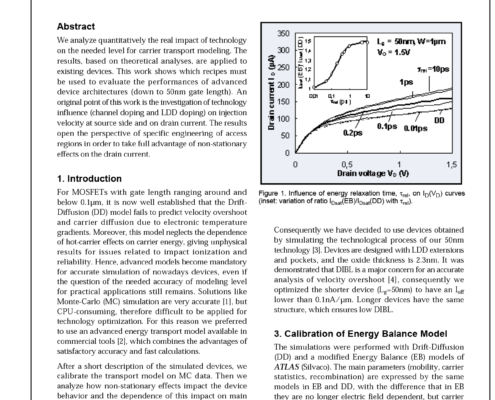
Non-Stationary Transport Effects: Impact on Performances of Realistic 50nm MOSFET Technology
We analyze quantitatively the real impact of technology on the needed level for carrier transport modeling. The results, based on theoretical analyses, are applied to existing devices. This work shows which recipes must be used to evaluate the performances of advanced device architectures (down to 50nm gate length).
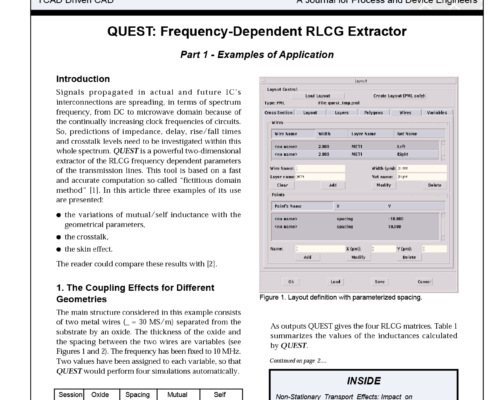
QUEST: Frequency-Dependent RLCG Extractor
Signals propagated in actual and future IC's interconnections are spreading, in terms of spectrum frequency, from DC to microwave domain because of the continually increasing clock frequencies of circuits. So, predictions of impedance, delay, rise/fall times and crosstalk levels need to be investigated within this whole spectrum. QUEST is a powerful two-dimensional extractor of the RLCG frequency dependent parameters of the transmission lines.
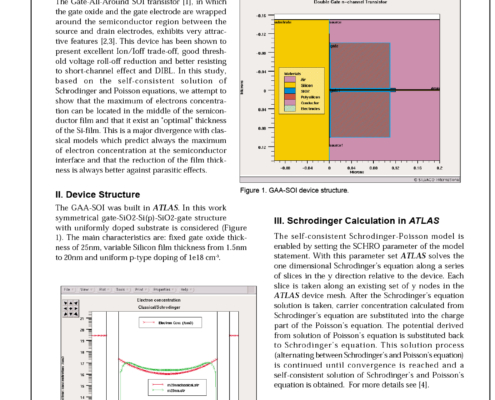
Modeling of Charge Distribution Using Schrodinger-Poisson Equations: Application to Double-Gate GAA-SOI Transistor
The Gate-All-Around SOI transistor [1], in which the gate oxide and the gate electrode are wrapped around the semiconductor region between the source and drain electrodes, exhibits very attractive features [2,3]. This device has been shown to present excellent Ion/Ioff trade-off, good threshold voltage roll-off reduction and better resisting to short-channel effect and DIBL. In this study, based on the self-consistent solution of Schrodinger and Poisson equations, we attempt to show that the maximum of electrons concentration can be located in the middle of the semiconductor film and that there exists
an "optimal" thickness of the Si-film.
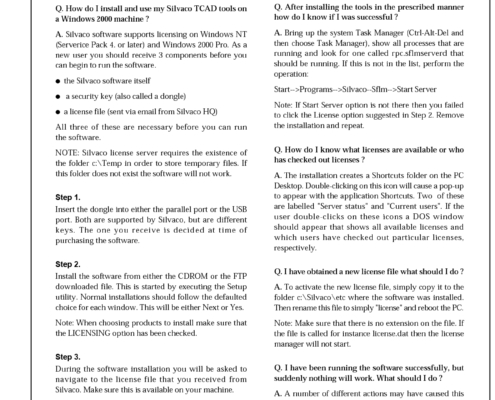 https://silvaco.com/wp-content/uploads/simulationstandard/simstd_feb_2002_hints.jpg
1669
1287
Graham Bell
/wp-content/uploads/2019/11/silvaco-logo.png
Graham Bell2002-02-01 20:15:052021-10-13 10:47:19Installing and using Silvaco TCAD tools on a Windows 2000 Machine
https://silvaco.com/wp-content/uploads/simulationstandard/simstd_feb_2002_hints.jpg
1669
1287
Graham Bell
/wp-content/uploads/2019/11/silvaco-logo.png
Graham Bell2002-02-01 20:15:052021-10-13 10:47:19Installing and using Silvaco TCAD tools on a Windows 2000 Machine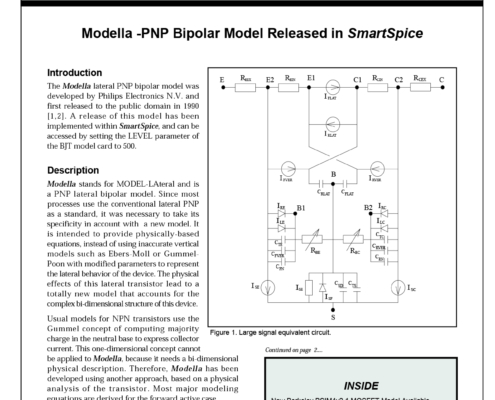
Modella PNP Bipolar Model Released in SmartSpice
The Modella lateral PNP bipolar model was developed by Philips Electronics N.V. and first released to the public domain in 1990 [1,2]. A release of this model has been implemented within SmartSpice, and can be accessed by setting the LEVEL parameter of the BJT model card to 500.
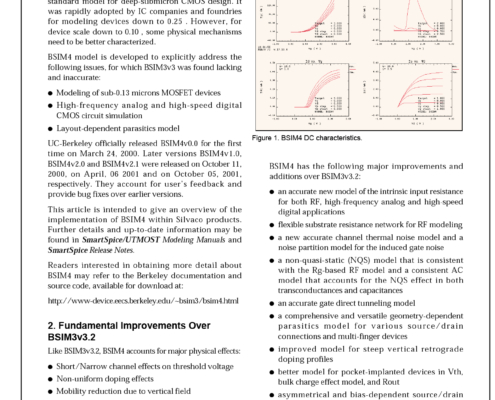
New Berkeley BSIM4v2.1 MOSFET Model Available Within SmartSpice/UTMOST III
So far the BSIM3v3.2 MOSFET model, developed by UC-Berkeley, has been considered as the industry standard model for deep-submicron CMOS design. It was rapidly adopted by IC companies and foundries for modeling devices down to 0.25 . However, for device scale down to 0.10 , some physical mechanisms need to be better characterized.
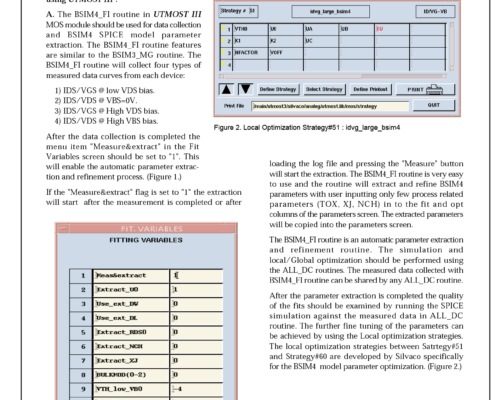
How to Achieve Good Parameter Optimization Using The New Methodology in UTMOST III Optimizer
Optimization is the task of finding the absolute best set of admissible conditions to achieve your objective, formulated in mathematical terms. The goal of optimization is, given a system, to find the setting of it's parameters so that to obtain the optimal performance. The performance of the system is given by an evaluation function. Optimization problems are commonly found in a wide range of fields, and it is also of central concern to many problems.

How to extract BSIM4 parameters using UTMOST III
The BSIM4_FI routine in UTMOST III MOS module should be used for data collection and BSIM4 SPICE model parameter extraction. The BSIM4_FI routine features are similar to the BSIM3_MG routine. The BSIM4_FI routine will collect four types of measured data curves from each device.
